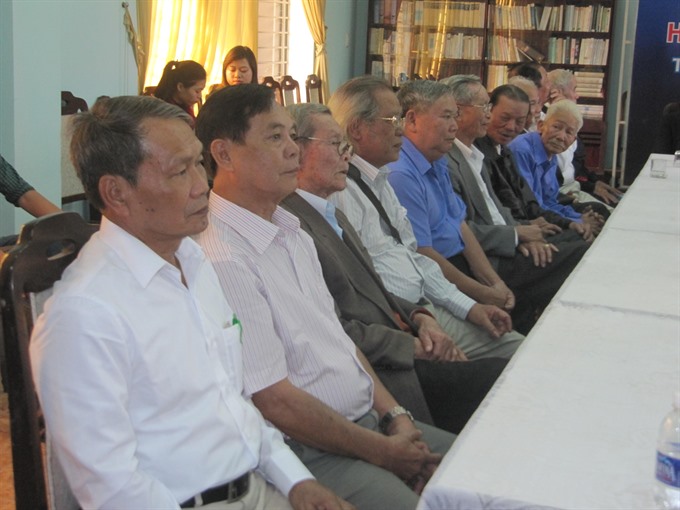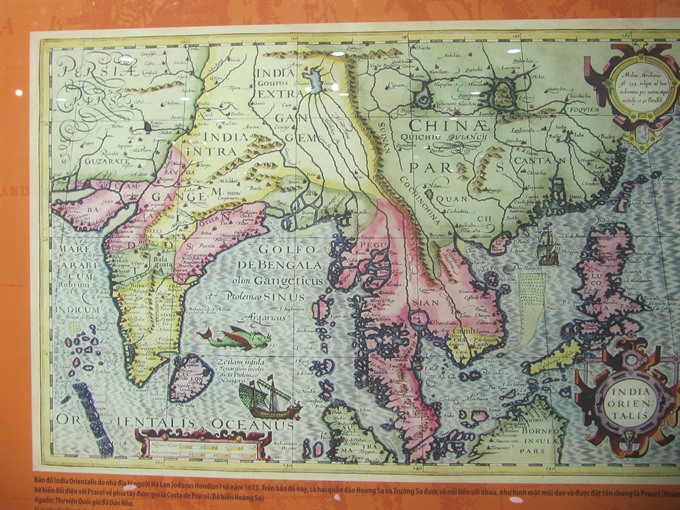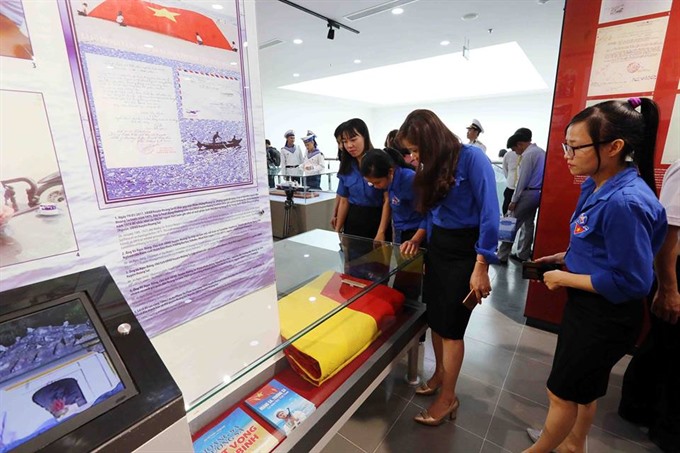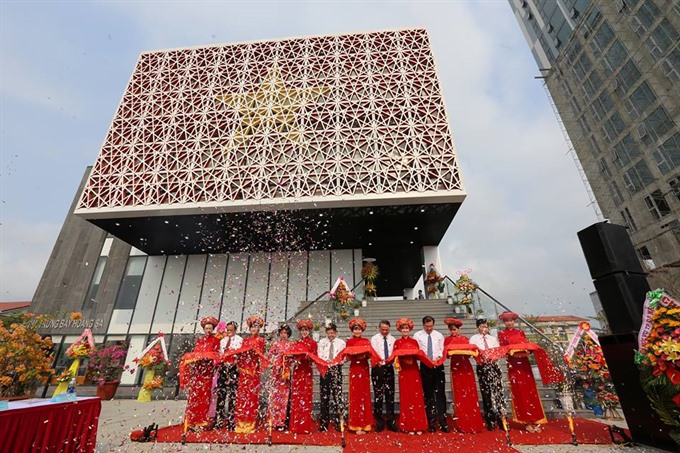 Life & Style
Life & Style

Đà Nẵng City’s Hoàng Sa (Paracel) Island district opened the Hoàng Sa Museum to the public in a ceremony on Wednesday, marking the 43rd anniversary of the city’s Liberation Day (March 29).
 |
| Living history: These men lived on and protected Hoàng Sa Island between 1959 and 1974. — VNS Photo Công Thành |
ĐÀ NẴNG — Đà Nẵng City’s Hoàng Sa (Paracel) Island district opened the Hoàng Sa Museum to the public in a ceremony yesterday, marking the 43rd anniversary of the city’s Liberation Day (March 29).
The museum, built on nearly 1,300sq.m along coastal streets of Hoàng Sa-Trường Sa-Võ Nguyên Giáp in the Sơn Trà Peninsula, displays artifacts and documents on Việt Nam’s sovereignty over the Hoàng Sa (Paracel) and Trường Sa (Spratly) islands.
It opens from 7.30am to 11.30am, and from 1.30pm to 5.30pm daily.
The shape of the museum, which was inspired by a seal made for the Hoàng Sa Flotilla during the reign of the Nguyễn Dynasty’s King Minh Mạng in 1835, was designed by Vietnamese architects Trần Quốc Thành and Nguyễn Quang Huy and Japanese architect Fuminori Minakami.
The design is an image of the 1835 seal, which officially founded the Hoàng Sa Flotilla. It was a stamp of authority for Việt Nam’s sovereignty over the Hoàng Sa and Trường Sa archipelagoes, recorded in ancient documents from previous centuries.
“It’s a significant landmark for the city in showing legal evidence and documents about Việt Nam’s sovereignty over the Hoàng Sa and Trường Sa archipelagoes,” said chairman of the city’s People’s Committee, Huỳnh Đức Thơ.
He said the museum will offer opportunities for tourists and local residents studying Hoàng Sa Archipelago history with vintage documents, photos and artefacts.
The chairman said a textbook on Việt Nam’s sovereignty over the two archipelagos has been included in the curriculum at junior secondary and high-school education system.
Secretariat of Hoàng Sa Island District’s Lê Phú Nguyện said the district has received a collection of 150 maps published between 1618-1859, and 1626-1908. Of which, many show evidence that the Paracel and Spratlys archipelagoes belong to Việt Nam, and 102 books published in English, German, French, Spanish, Italian, Dutch and the Hán Chinese script showing the frontier of Southern China is Hainan Island.
Nguyện also said the district plans to display a shipwreck in the museum’s backyard. The vessel was rammed by Chinese boats in Vietnamese waters off the Hoàng Sa Archipelago in 2014.
Last year, Hoàng Sa District People’s Committee held a meeting of 12 people who lived, worked and fought for the archipelago from 1959-1974. Hoàng Sa was illegally seized by Chinese forces on January 19, 1974.
Last year, American-Vietnamese collector, Trần Thắng, donated to Hoàng Sa Island District the Pattie De La Conchinchine, an 1827 map printed in the six-volume World Atlas by late Belgian cartographer Phillippe Vandermaelen.
The Pattie De La Conchinchine map indicated the central region was part of Annam (a French protectorate encompassing the central region of Việt Nam) and Hoàng Sa (Paracels) was under the sovereignty of Việt Nam from at least the 19th century onwards. — VNS
 |
| From the sky: An aerial photo of Hoàng Sa (Paracel) Island of Việt Nam. — VNS Photo Công Thành |
 |
| Primary source: A copy of an old map drawn by Jodocus Hondius I (the Netherlands) in 1613. — VNS Photo Công Thành |
 |
| Teach the youth: Young people visit Hoàng Sa Museum in Đà Nẵng city. It opens daily from Monday to Friday. — VNS Photo Lê Lâm |
 |
| On display: The central city of Đà Nẵng inaugurates the Hoàng Sa (Paracel) Island Museum in a ceremony yesterday. The museum contains collections of old maps, photos and documents about Việt Nam’s sovereignty over the Hoàng Sa (Paracel) and Trường Sa (Spratly) Archipelagos. — VNS Photo Lê Lâm |




